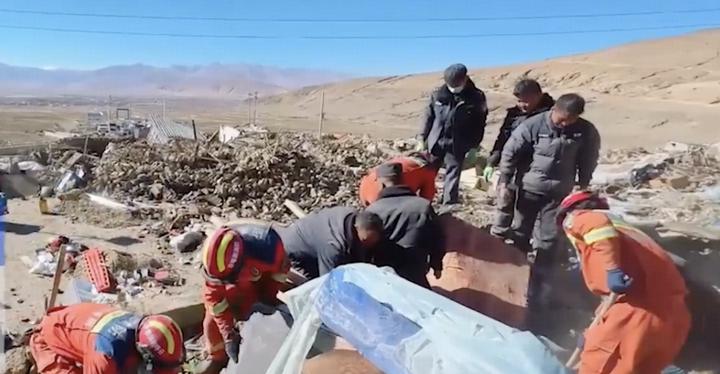Tibet's Devastating 6.8 Magnitude Earthquake
A powerful 6.8 magnitude earthquake struck Dingri County in Tibet’s Shigatse region on January 7, 2024, causing 126 fatalities and 188 injuries. Emergency response efforts are underway with over 30,000 residents evacuated to safety.

On January 7, 2024, at 9:05 AM local time, a devastating 6.8 magnitude earthquake struck Dingri County in China’s Tibet Autonomous Region, marking one of the region’s most severe seismic events in recent years. The earthquake’s epicenter was located in Zhaguo Township at a depth of 10 kilometers.
The impact has been particularly severe due to the challenging winter conditions in the region. Temperatures in the affected areas have plummeted to -20°C at night, with wind speeds reaching up to force 10, creating extremely difficult conditions for both survivors and rescue teams.
The immediate response has been comprehensive. Authorities have established 14 emergency shelters, successfully evacuating over 30,000 residents from affected areas. Medical response has been swift, with 24 medical teams comprising 568 personnel and 106 ambulances deployed across the region. Local hospitals have admitted 28 critically injured patients.
The earthquake has caused significant structural damage, with 3,609 houses reported collapsed. Emergency supplies, including over 170,000 items such as cotton tents, folding beds, quilts, winter clothing, and heating equipment, have been dispatched to the disaster zone.
Rescue efforts face unique challenges due to the region’s high altitude, averaging 4,259 meters above sea level in the epicenter area. The affected zone includes three townships and 27 villages, with approximately 6,900 residents within a 20-kilometer radius of the epicenter.
The regional government has elevated the emergency response to Level II, mobilizing resources from across Tibet. Roads damaged by the earthquake have been cleared to facilitate rescue operations, and communication networks are being restored to maintain coordination efforts.
Traditional Tibetan stone buildings in the area have been particularly vulnerable to the seismic activity. The combination of structural damage and severe winter conditions has created an urgent need for both immediate rescue operations and sustainable temporary housing solutions.
The earthquake has also triggered multiple aftershocks, with the strongest measuring 4.4 magnitude, necessitating continued vigilance and careful planning of relief efforts. Local authorities are working to ensure the safety and basic needs of affected communities while managing the ongoing risks posed by aftershocks and severe weather conditions.